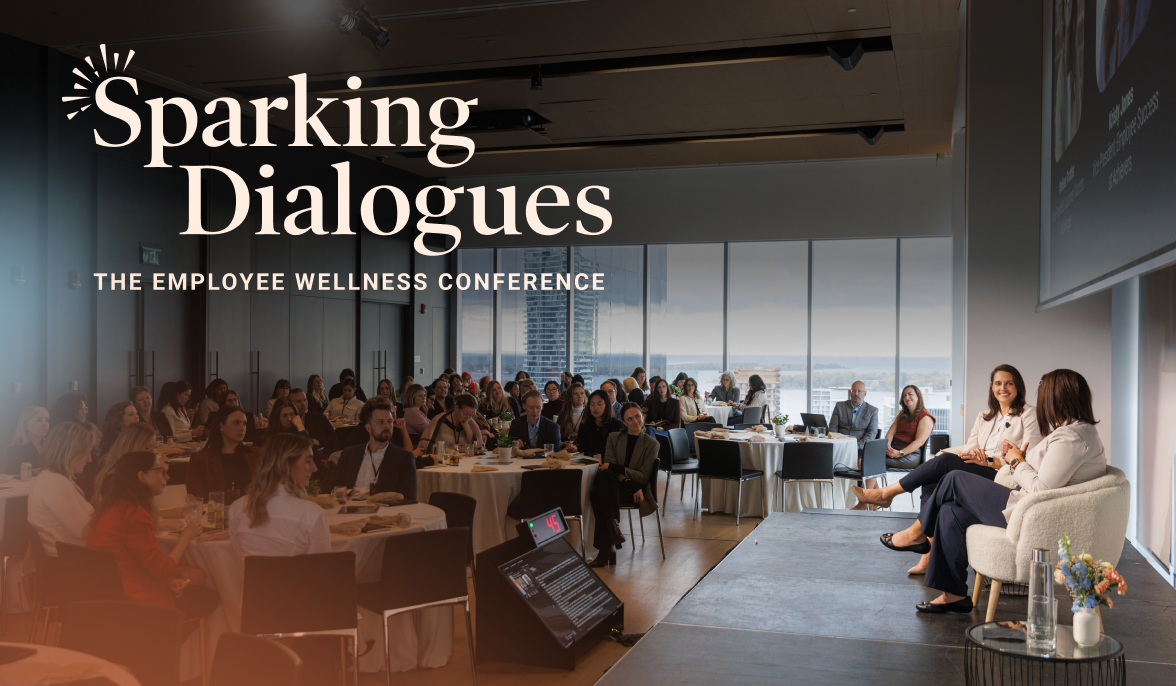What is mental health and how common are mental health issues?
Mental health is defined by the World Health Organization as “a state of well-being in which every individual realizes his or her own potential, can cope with the normal stresses of life, can work productively and fruitfully, and is able to make a contribution to her or his community.” 1 out of 3 Canadians will suffer from mental illness at one point during their lifetime, which translates into approximately 12 million people. In 2021, according to Statistics Canada, 25% of Canadians above 18 years old screened positive for symptoms of depression, anxiety, or post-traumatic stress disorder (PTSD). These are conditions that often disturb everyday life, compromising the quality of time spent with family and friends as well as the ability to work.
The Importance of Promoting Mental Health in the Workplace
Talking about mental health in the workplace brings many socio-economic benefits. Short- and long-term medical leaves of absences cost Canadian employers more than $6B every year. Also, mental illness, the leading cause of disability in Canada, represents 30% of all the disability claims. Employers should put forward programs, policies or services to support their employees’ needs when it comes to mental health. Easy access to care reduces absenteeism related to stress, exhaustion and mood swings. It also increases employees satisfaction, mood, teamwork and retention. Integrating Dialogue is a great way to empower employees by giving them access to an entire medical community, and helping them lead a happier and healthier life.
Mental health awareness and solutions
Almost half of Canadians who are suffering from anxiety or depression will never seek help from health professionals. Stigma and discrimination are still present and often represent a barrier for people to act and to get the medical support they need. Our mind requires the same care as our body and mental illness can be treated as effectively as any other physical problem. Virtual care and wellness offerings like Dialogue constitute accessible and effective options in seeking help or treatment by offering another means of communication as psychological issues can be difficult to talk about. Dialogue’s mental health offering treats stress, depression, anxiety, mood disturbance, insomnia, social conflicts, as well as challenging relationships at work. As smartphones are the most widely used communication tool among 18 to 55 year olds, the majority of workers can easily access Dialogue’s services and the care they need via text messages, phone calls and video calls.
Building a culture of health and wellness
Promote employee engagement with your benefits
Leaders must actively promote mental health programs and employee well-being to create a workplace culture that values wellness. The current reality is that there is an unfortunate lack of employee awareness with regard to what benefits they have access to:
- 2 in 10 Canadians with employee benefit plans are not even aware of the benefits available to them.
- 24% of Canadians with benefit plans indicate that the mental health support available in their benefit plan is not sufficient.
- Over 25% don’t know how to access the benefits available to them (via an app, a toll-free number, etc.).
Normalize mental health and wellness
To fight mental health stigma, organizations must become the leading advocates for employee wellness, from ensuring employees are taking valuable breaks or using vacation time, to encouraging honest feedback and monitoring overall well-being using feedback software. This creates a culture where mental health is valued and openly discussed, and employees are encouraged to seek appropriate help for mental health issues.
Promote healthy living
Another quick way to start prioritizing mental health is by promoting healthy living. Healthy activities that can help employees feel good and stay on top of their game include:
- Exercise and nutrition
- Meditation and sleep quality
- Therapy or building resilience through iCBT
There are plenty of ways to help employees take breaks from work that will help them relax, re-energize, or refocus. But successful wellness initiatives require a top-down commitment to being open about and encouraging mental healthcare discussions. If employees feel encouraged to access their mental health benefits, they will more likely be able to acknowledge and seek help for symptoms before a problem escalates. Organizations benefit from a happier workforce and possibly reduce disability-related costs in the long run by leveraging a preventative approach to treating mental health issues.




 Canada (EN)
Canada (EN)
 Global (EN)
Global (EN)







